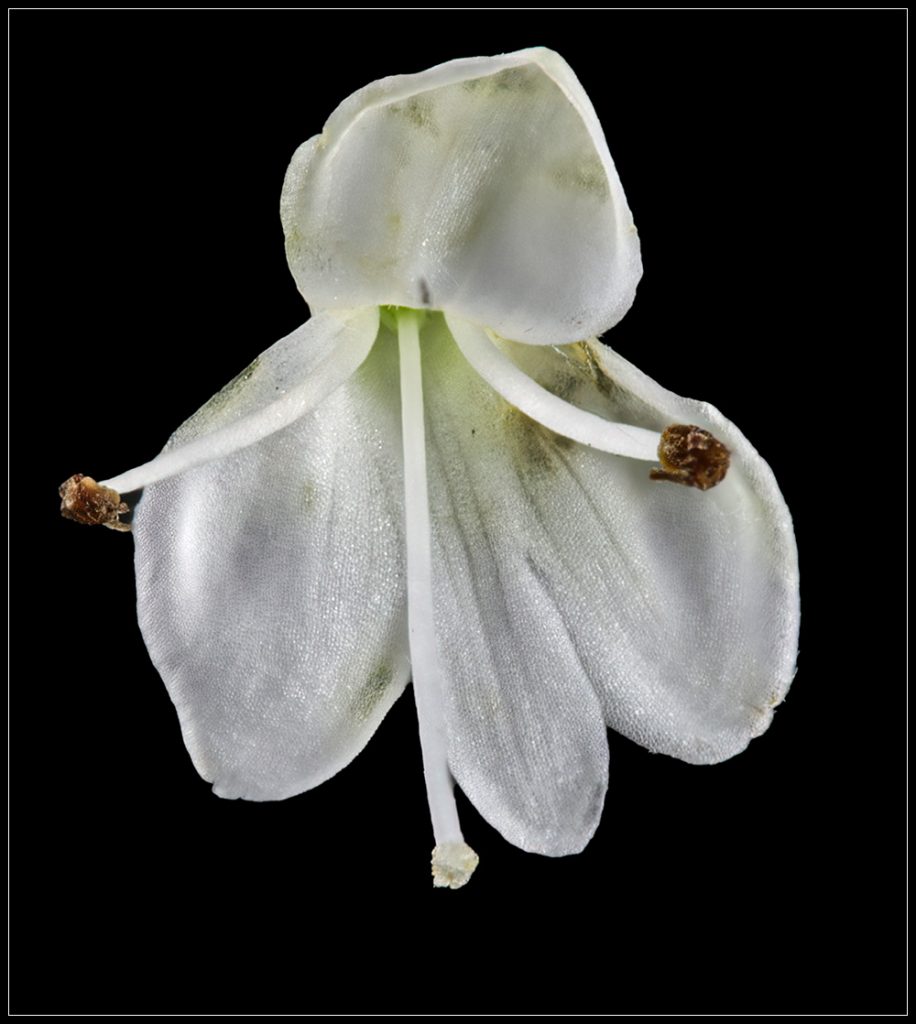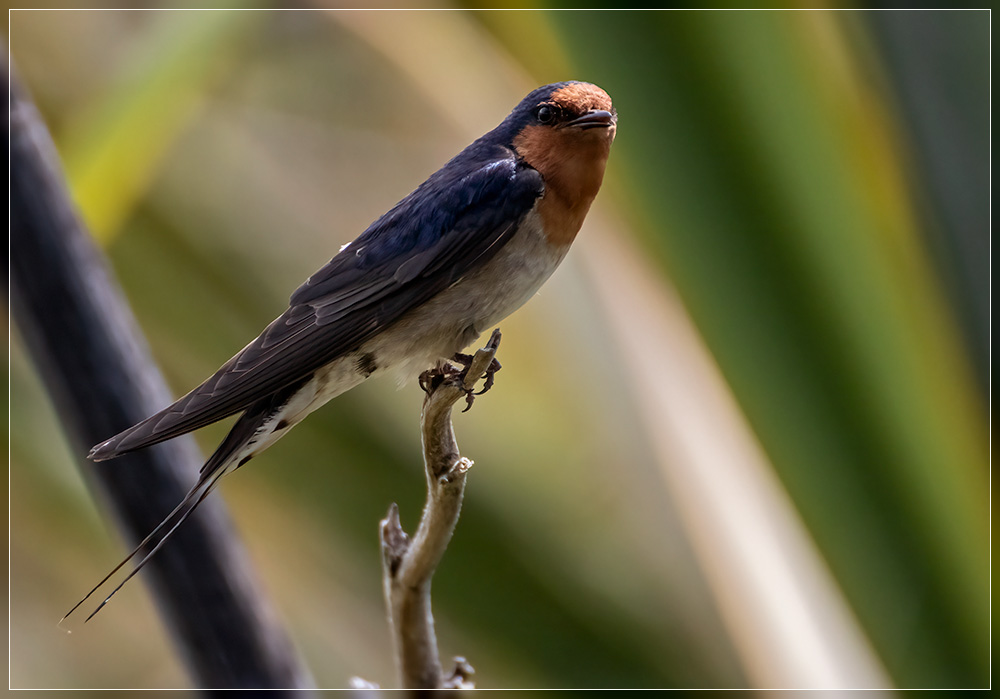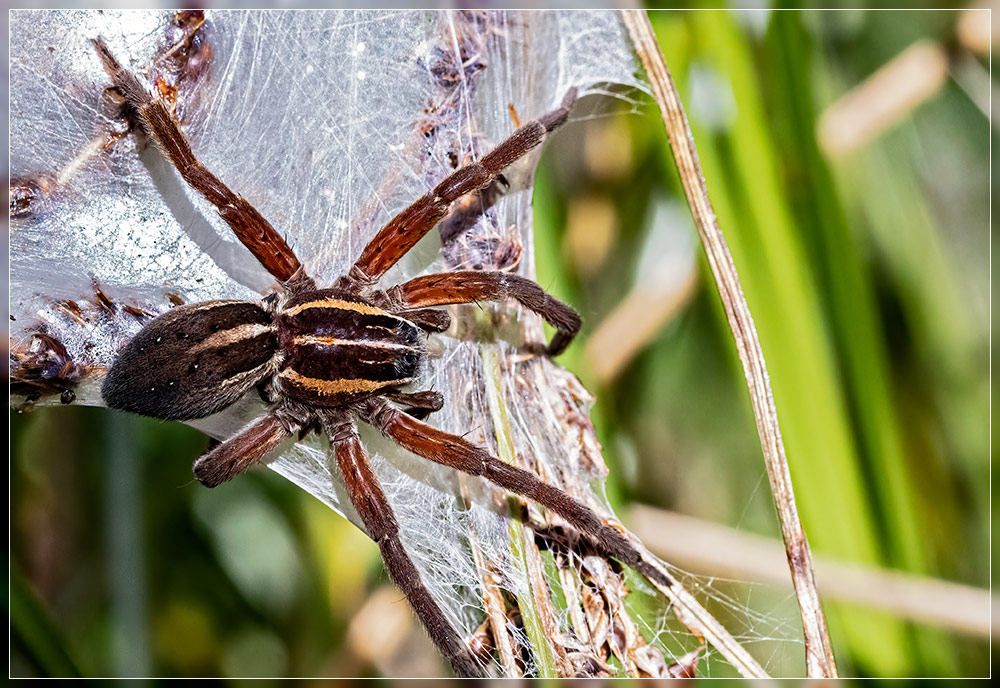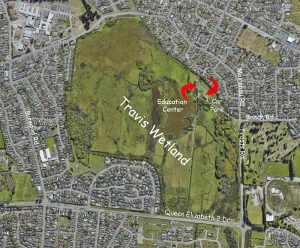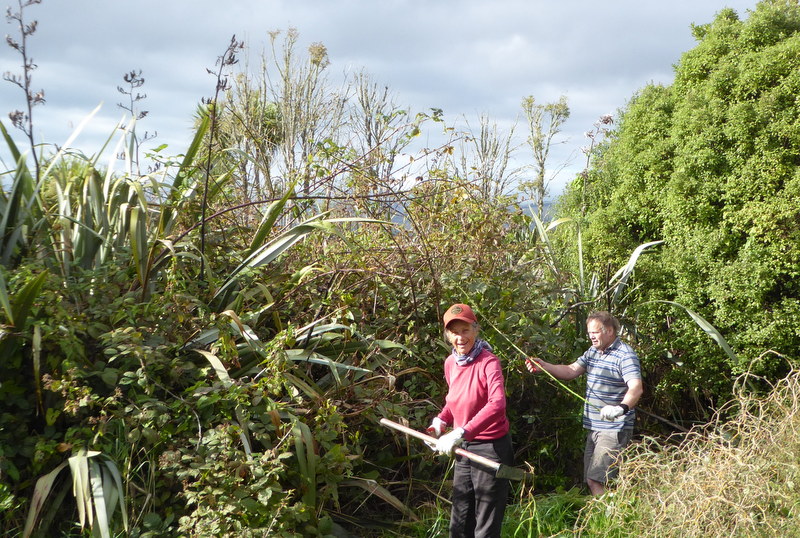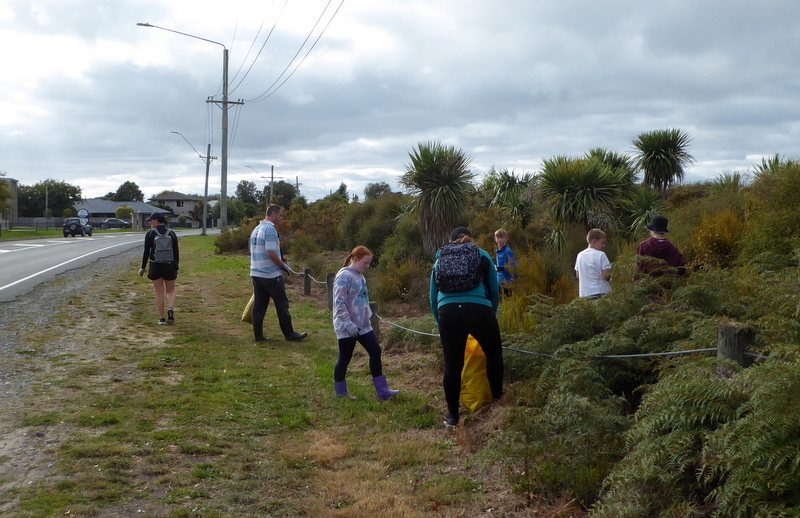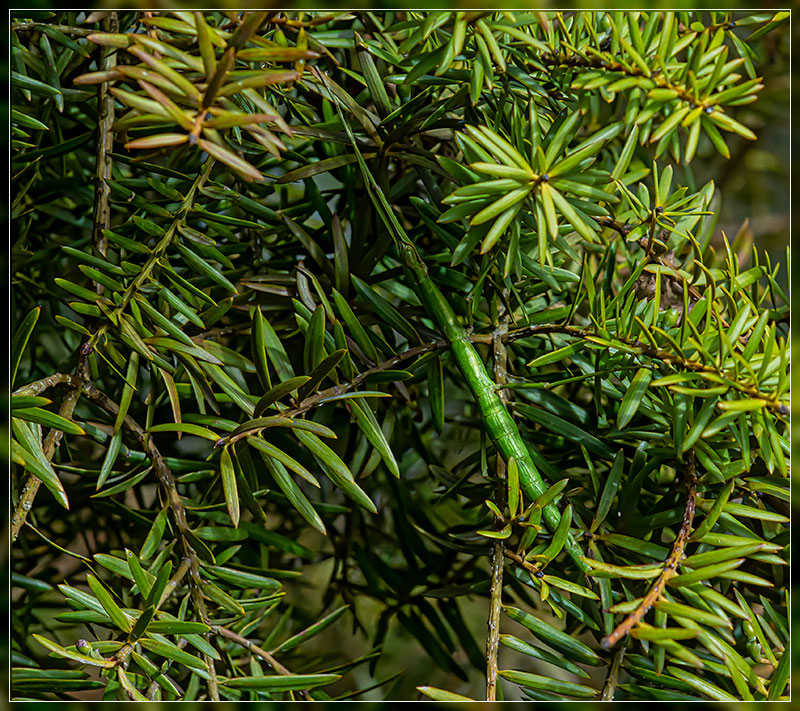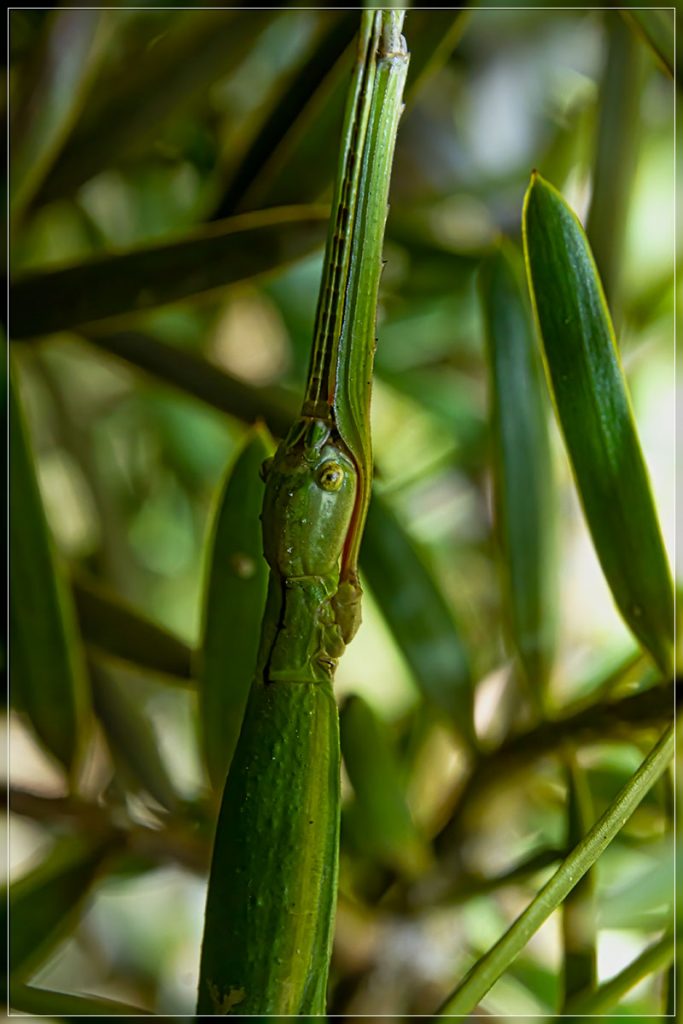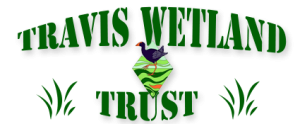 |
Work Day Reminder, April 16 2022
The next monthly work day will be from 9.00am – noon this coming Saturday.
Please make sure we have your attendance recorded and a contact phone number and please let us know if you subsequently come down with Covid and could have been infectious at the time of the work day. Presentation of a Covid vaccine pass is not required. Morning tea will be structured to avoid close contact.
On the work day I’m not sure what we’ll be doing but I suspect we will be releasing plants somewhere around the wetland. If you arrive late there will be a notice on the Education Centre door saying where we have gone.
All tools provided. It may be wet underfoot, so gumboots are advised. If you don’t own any we do have some for loan. Please bring your own gloves if you can.
Latest News
Report on Last Work Day, 19 March
On a cloudy morning in the midst of a Covid 19 surge it was pleasing to see 26 keen people, including several children, turn out for a day of weed control.
Our work began at the Mairehau Road car park, cleaning up both sides of the track towards Inwoods Road. Due to the variations in soil types and vegetation there were many different tasks available.
Dry areas near the road had periwinkle, nightshades, some large lupins and flowering white campion. The campion is a member of the carnation family and appears to have benefited from irrigation of these dry dune areas. Moister zones had plenty of convolvulus and blackberry.
Special mention goes to Alan and Belinda who bravely battled some giant blackberry and managed to remove them, roots and all. The children filled 2 large sacks with rubbish near the roadside and received appreciation from passing motorists.
Natural history observations by the children included pūkeko dancing on a Carex sedge, a dead rat and a thrush nest. A pleasing plant find was a native jasmine (Parsonia heterophylla), which was released and trained up a nearby tree. In most areas native plantings were growing well, with good natural seedling growth under trees on the wetter side of the track.
A brisk walk back to the Education Centre was followed by welcome refreshments. The children enjoyed seeing a variety of birds nests from the store room and comparing them with the one they had found.
Thanks to everyone who helped.
Article: Sue Britain, Images: Dave Evans
Secretive Stick Insects
Responses on seeing one of these little critters up close is mostly —eee — aaah! (Accompanied by the observer shrinking away!)
At Travis these bright green (sometimes brown) insects which grow to about 10 centimeters and can be observed resting with their front legs forward along the branches, looking like a branch. Camouflage is their only protection – our New Zealand ones can’t fly. The best place to see them is resting in warmer sunny spots on Kānuka and Tōtara trees. The feed on leaves at night, as that is safer than being discovered and eaten by a bird, rat, mouse or lizard during the daytime.
The female lays eggs in autumn to complete her life cycle, but some survive through the winter. The eggs hatch as miniatures of the adult. Growth occurs by moulting, each moult is called an instar. This happens six to 9 times as they develop. Watch out for these cute little, peace loving, vegetarian insects.
Article: Eleanor Bissell, Images: Grahame
Waitaki stop banks – progress in the red zone
Work has started on the first phase of stop bank creation and river edge improvements. This work is being carried out immediately north of Pages Road close to the Brighton Bridge. An early phase of works had already started (you may have noticed the 30kph speed zone for the last few weeks on QE2 Drive) and included an access point for service vehicles from the state highway. This current phase sees the construction of a new stop bank, the partial removal of the existing stop bank, the creation of stormwater treatment basins and wetland areas behind the new stop bank. The stormwater treatment areas are to deal with stormwater from existing development in the catchment that currently receives limited treatment before discharging into the river.
The Bexley landing area is also to be developed as part of this project – including the establishment of a bird viewing area, an interpretation node, and extensive landscaping. The current stop bank will eventually have openings made in it to facilitate a tidal wetland developing between the new and old stop banks.
The works also include a 4m wide shared path as part of the City to Sea trail, and a sealed car park area accessed off Pages Road and providing 13 parking spaces.
Keep an eye out as this work progresses and further phases commence over time.
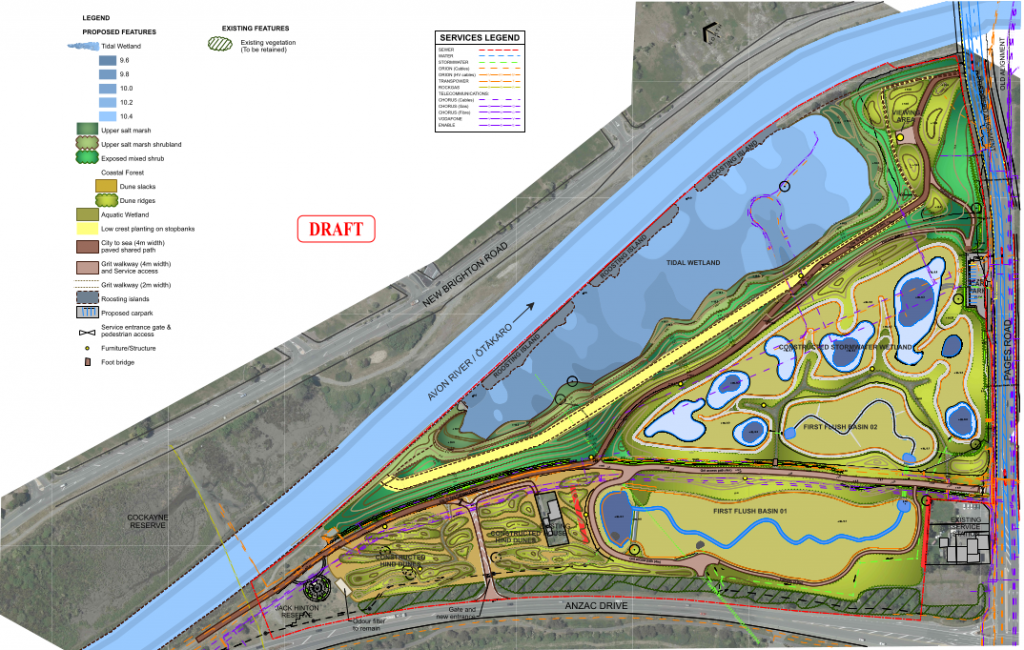
Images from Grahame
